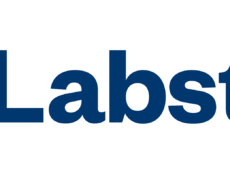
There’s a myth that pervades online college programs. Many believe that it’s cheaper to deliver, and that cost saving is passed down to students in a reduced online tuition. A professor, for example, might record lectures for a given class once and reuse them for several years, saving time that would have been spent preparing and teaching. An online course can also host many more learners than can fit in the biggest lecture hall in the world.
This myth is perpetuated by many online degrees that are cheaper than their on-campus analogs. On Tuesday, Champlain College Online reduced its online undergraduate tuition by 50 percent to $318 per credit, effective Fall 2018. Pennsylvania residents attending Penn State pay $18,346 per year, while online students play just $13,484. Examples of online tuition costing less than an on-campus equivalent are myriad, but it does not necessarily reflect on the quality of education.
Online Tuition Often Costs the Same as On-Campus. Often, Online Students Pay More.
A study published last year by the WICHE Cooperative for Education Technologies (WCET) surveyed nearly 200 educators and administrators who “are on the front lines of offering distance courses.” They found that, “more than half (54.2%) of our respondents report[ed] that distance students pay more than on-campus students when tuition and fees are added. About three-quarters (75.1%) of institutions who completed the study indicated that tuition was the same, but the added fees continue to result in the price to students of distance courses being more.”

The survey also looked deeper into the issue of the various costs associated with distance programs. Researchers identified 21 different factors in four general categories: preparing, teaching, assessing students, and supporting faculty and students. When asked about how these match up with the costs of on-campus courses, the results were again counterintuitive:
“The results reveal that for twelve (57.1%) of the components the respondents thought there was no difference in the costs. For nine (42.9%), of the components respondents thought that distance courses cost more and, in some cases, much more. Respondents did not identify a single component of a distance course at their institution that costs less.”
True, WCET’s sample of respondents isn’t huge or necessarily representative, but their results are surprising nonetheless.
Getting Into the OPM Market Is Risky Business
Last week, we reported on the current state of the online program management (OPM) sector. Many colleges bringing their courses online will typically hire a third party to perform various tasks such as building their digital infrastructure, taking care of IT support, marketing their courses, and, in some cases, even designing their curricula.
But what’s most surprising about OPMs is that their field, compared with others in education and tech, is incredibly difficult and risky. OPMs—and by association, universities—face such a high upfront cost that the typical OPM contract involves a revenue-sharing agreement that usually ranges between 40% to 60% of what a university makes on their online course. What’s more, it often takes years before universities begin to break even with their online courses. A typical OPM contract will last 10 years.
Despite these high costs, online programs still vary just as widely in tuition and fees as on-campus programs. In a university climate where tuition has doubled or even tripled in the past thirty years, there’s no shortage of pressure to offer tuition at a lower cost. The colleges that lower the cost of their online programs need to make up for that reduction in price somewhere. Still, while some cut corners to deliver a cheaper education, others don’t. Champlain College did not hire an OPM to create their online classes. They don’t offer white-labeled curricula. Their online class sizes are often smaller than on-campus, and they seek to give each of their students – regardless of their medium of study – the same attention and effort.
There’s another myth about online education: it’s lower in quality. Many hardworking educators actively debunk this myth on a daily basis. But considering the high costs of both bringing a course online and the feverish rise in tuition, these educators and administrators face serious headwinds. It’s easy to look to other, cheaper online programs and draw conclusions.







No Comments